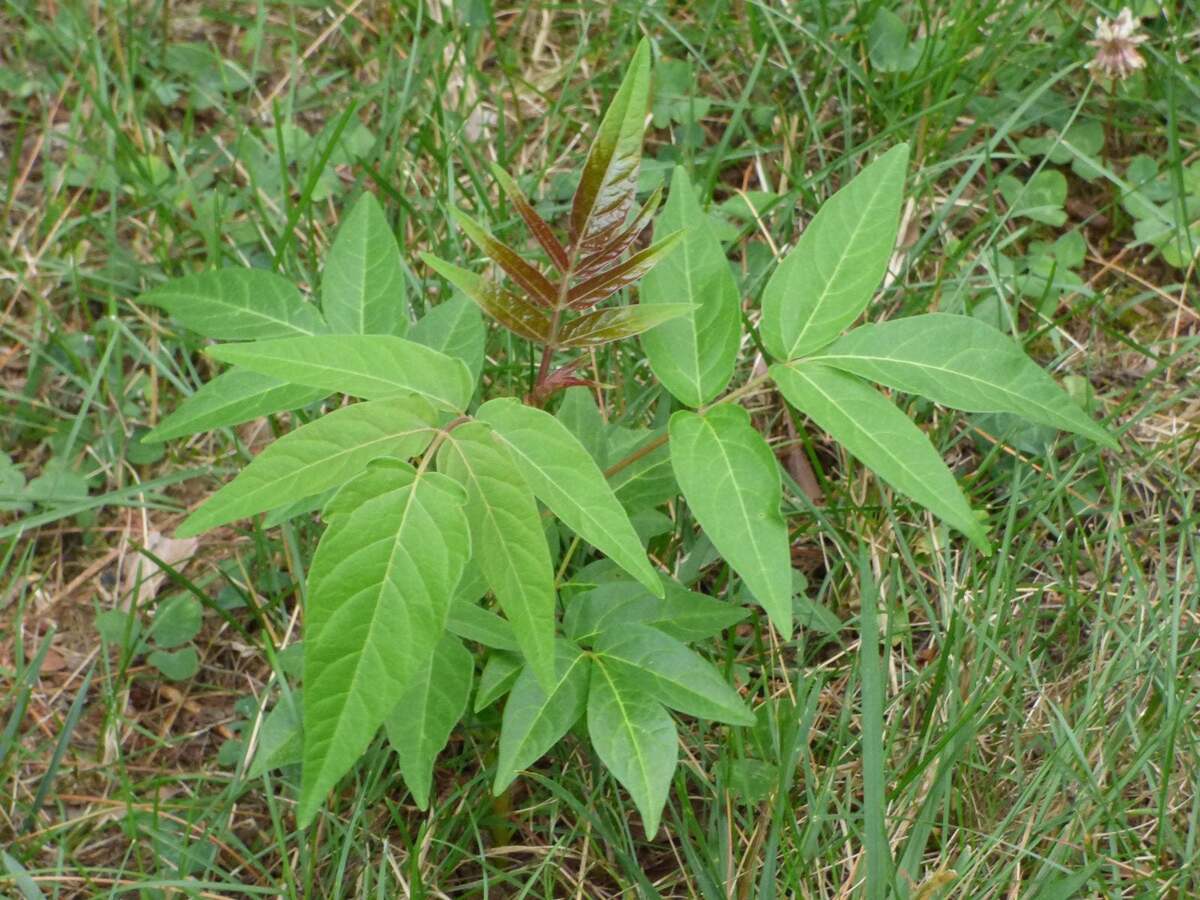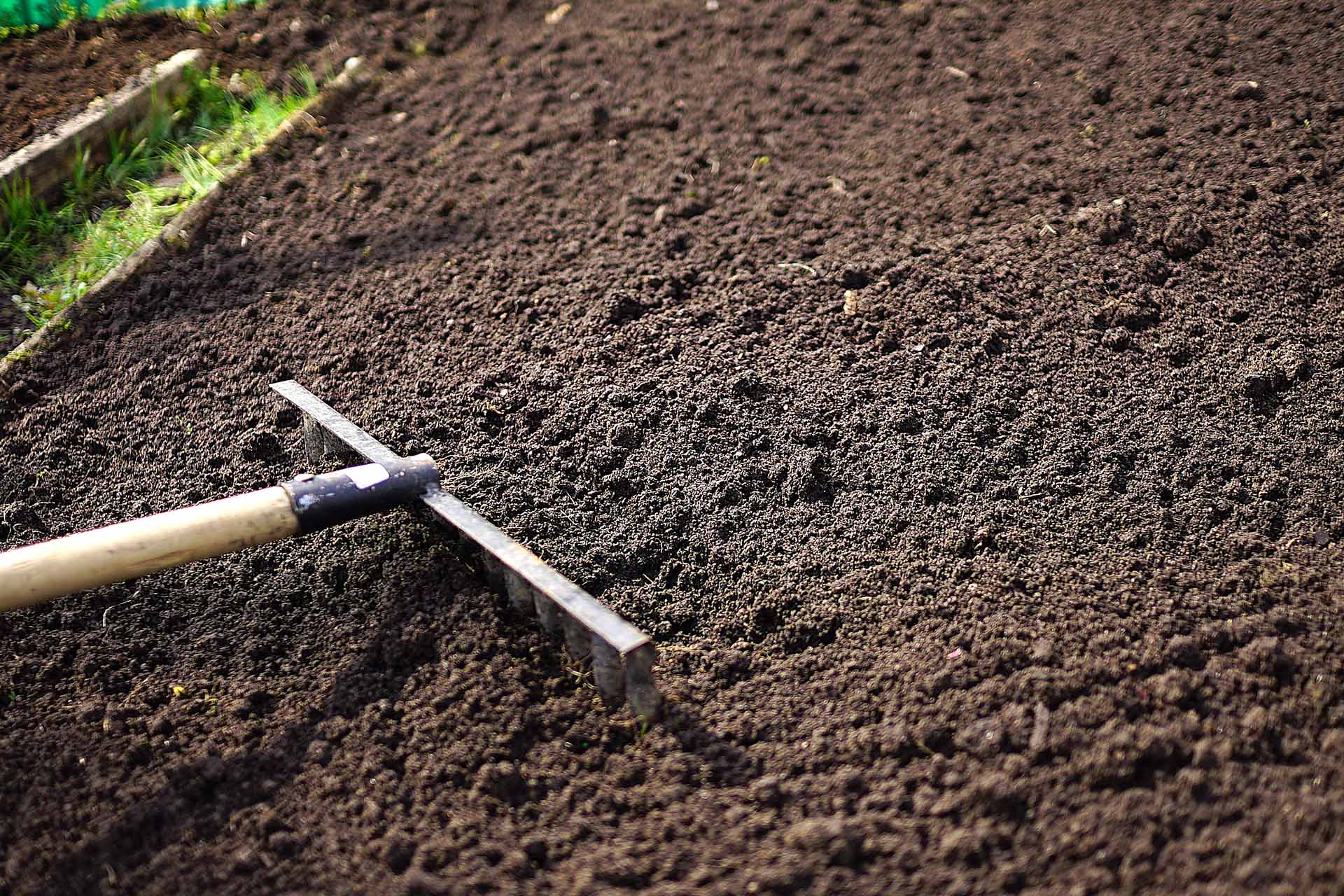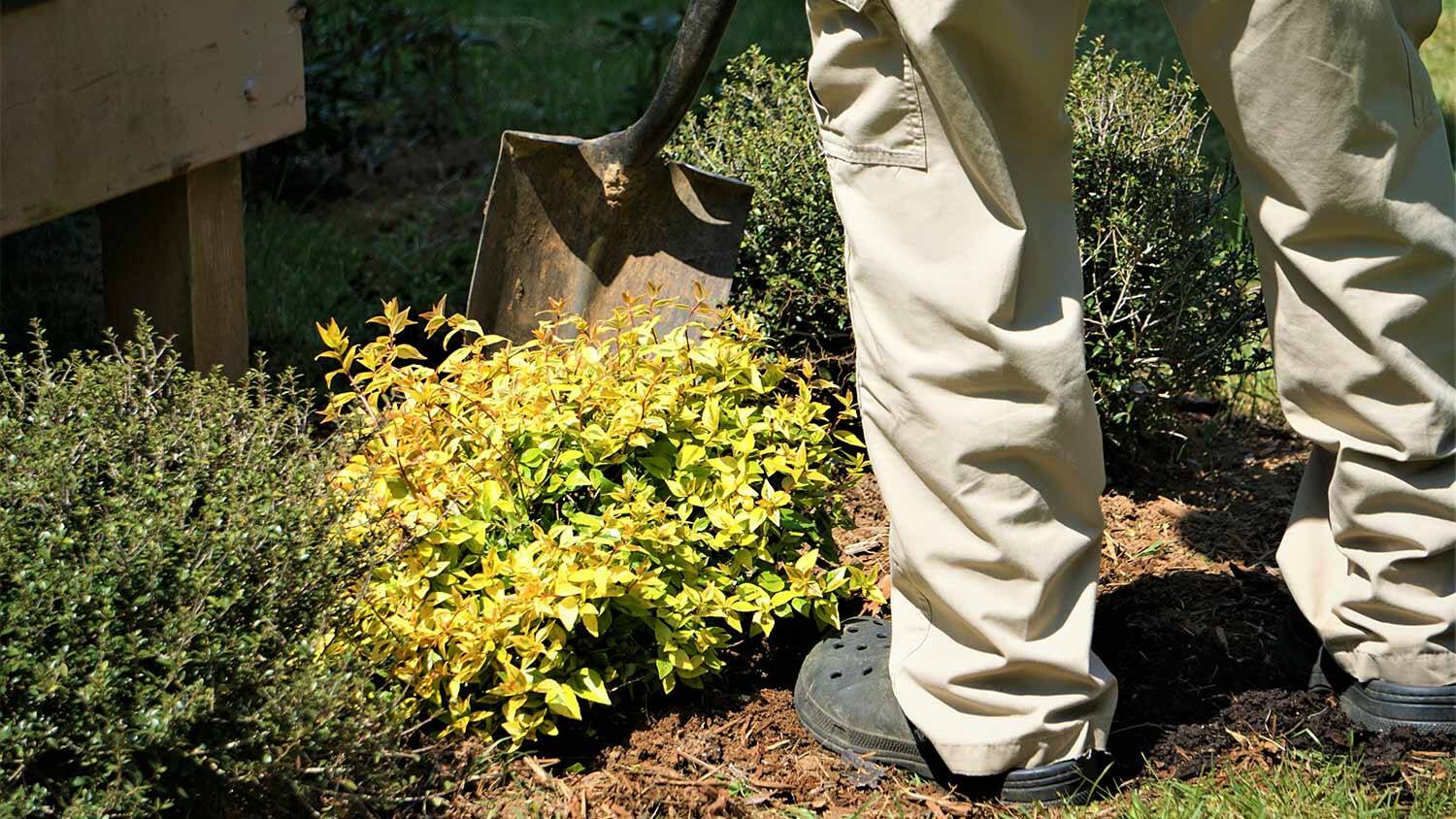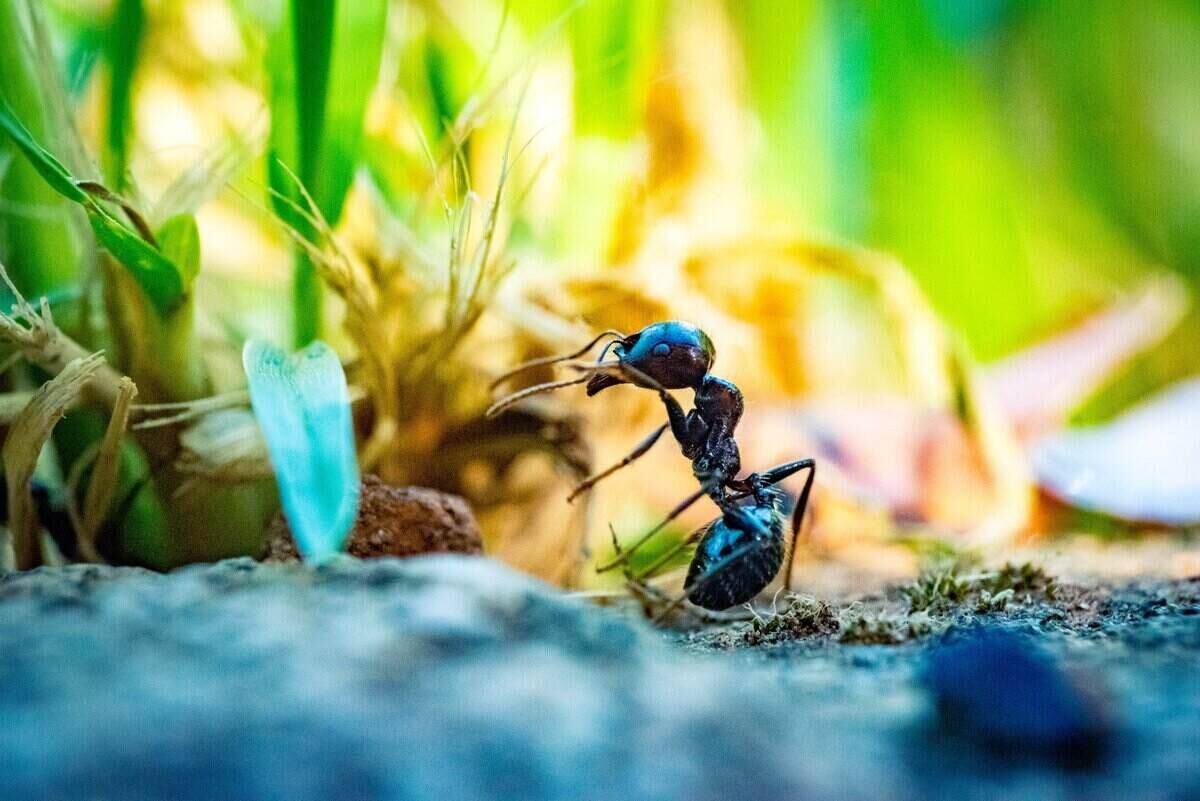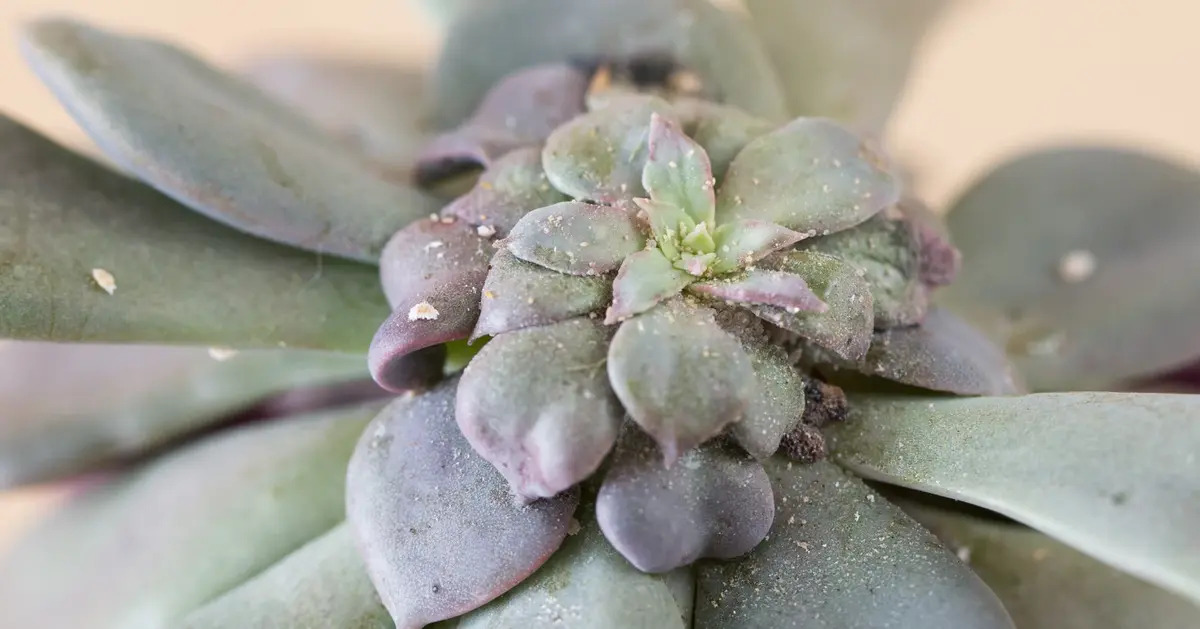Home>Gardening Tips and Tricks>Problem Solving>How To Get Rid Of Black Fungus On Trees
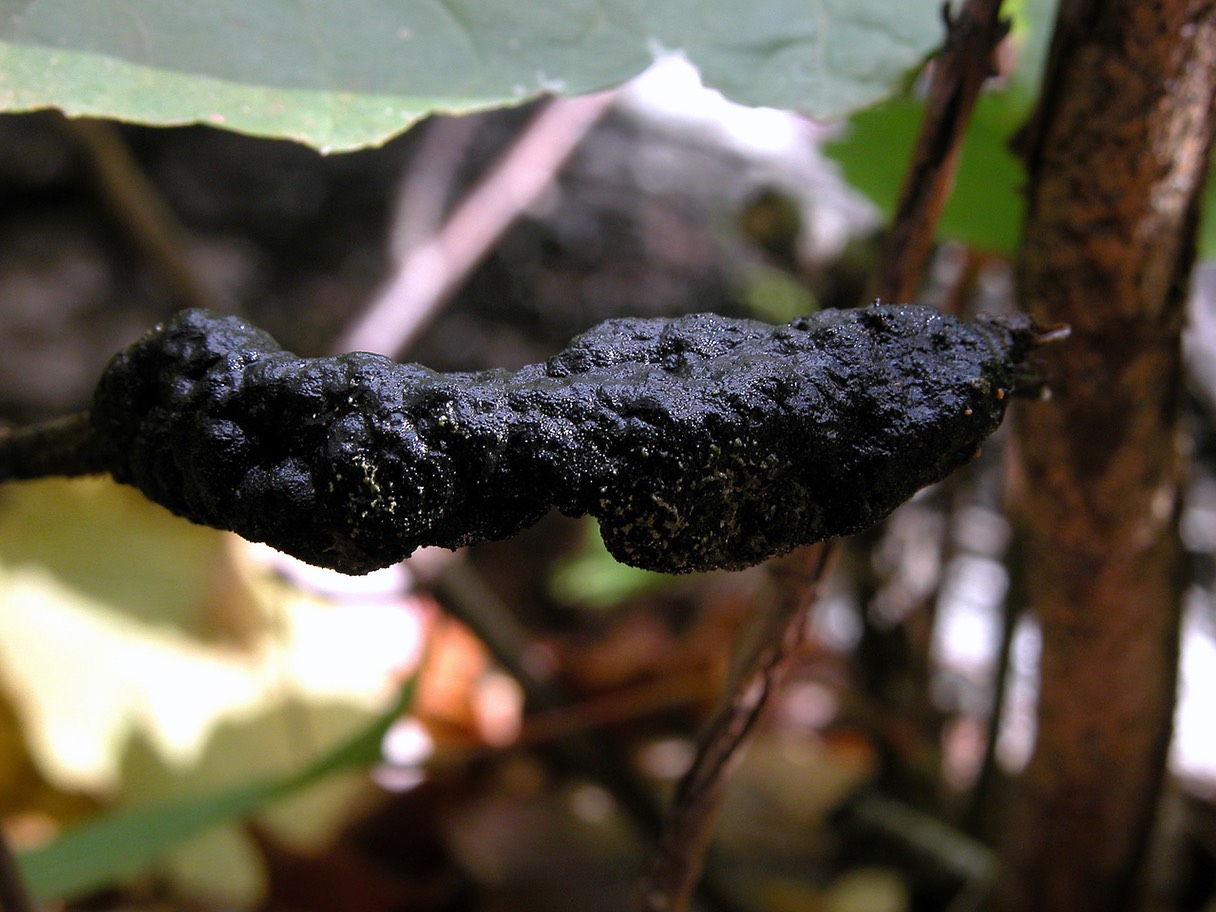

Problem Solving
How To Get Rid Of Black Fungus On Trees
Modified: January 22, 2024
Learn effective problem-solving techniques to get rid of black fungus on trees and protect their health. Say goodbye to this common issue with our expert tips and tricks.
(Many of the links in this article redirect to a specific reviewed product. Your purchase of these products through affiliate links helps to generate commission for Chicagolandgardening.com, at no extra cost. Learn more)
Table of Contents
Introduction
Black fungus is a common problem that many gardeners and arborists encounter when caring for trees. This type of fungus not only affects the appearance of trees but can also pose a threat to their overall health. It is important to address an infestation of black fungus promptly to prevent further damage.
In this article, we will explore the causes and effects of black fungus on trees and provide effective methods to get rid of it. Whether you are a homeowner with a cherished backyard tree or a professional landscaper responsible for maintaining a large arboretum, the information and techniques shared here will be invaluable in combating black fungus.
Understanding the nature of black fungus is crucial in effectively managing and preventing its spread. By learning to identify black fungus and pinpointing its causes, we can apply the appropriate control measures to protect our trees and ensure their longevity.
Prevention is key when it comes to black fungus. By implementing proper cultural practices and employing various control methods, we can minimize the risk of black fungus infestation and maintain the beauty and health of our trees.
So, let’s dive into the world of black fungus on trees and discover how to defeat this common enemy.
Understanding Black Fungus on Trees
Black fungus, also known as sooty mold, is a type of fungal growth that commonly affects trees. It appears as a dark, powdery substance on the surfaces of leaves, branches, and stems. While black fungus doesn’t directly harm the tree, it can indicate an underlying issue that needs to be addressed.
Black fungus is not an actual pathogen but rather a secondary issue that arises due to the presence of certain pests like aphids, scales, or whiteflies. These insects produce a sticky, sugary substance called honeydew, which serves as a food source for black fungus spores. The spores then colonize on the honeydew and form a black coating, giving the appearance of black fungus.
It’s important to note that the black coating itself does not cause harm to the tree. However, prolonged infestation can reduce the tree’s ability to photosynthesize and can block sunlight from reaching the leaves, affecting overall growth and vigor.
Black fungus can be found on a wide variety of tree species, including fruit trees, ornamental trees, and even evergreens. It thrives in warm and humid conditions, making it more prevalent during the summer months.
To effectively manage black fungus on trees, it’s crucial to address the underlying pest infestation. By targeting and controlling the pests that produce honeydew, we can eliminate the food source for black fungus and prevent its growth and spread.
Regular monitoring of trees, especially during periods of high pest activity, is essential. Look out for signs of aphids, scales, or whiteflies, such as sticky substances on leaves, distorted growth, or the presence of the insects themselves. Early detection and intervention can prevent the infestation from worsening and save the tree from further damage.
Identifying Black Fungus
Identifying black fungus on trees is relatively straightforward once you know what to look for. The characteristic black coating on leaves, branches, or stems is a telltale sign. However, there are a few key points to keep in mind when trying to identify black fungus:
- Appearance: Black fungus appears as a dark, powdery substance on the surface of tree parts. It can range from a thin and scattered layer to a thick, almost tar-like coating.
- Color: As the name suggests, black fungus is predominantly black. However, it can also have shades of gray or brown, depending on the severity of the infestation.
- Texture: The texture of black fungus is often velvety or granular. When touched, it may leave a black residue on your fingers.
- Location: Look for black fungus on leaves, branches, and stems, particularly on the upper surface of leaves, where sunlight exposure is highest.
It’s important to note that although black fungus is often the result of honeydew produced by pests, it can also be a sign of other underlying issues such as fungal infections or environmental stresses. To confirm that the growth is indeed black fungus, you can gently wipe the affected area with a damp cloth. If the black substance easily comes off and smears, it is likely black fungus. However, if it remains firmly attached or exhibits a different texture, it may require further investigation.
In some cases, black fungus may also attract other insects like ants or wasps, who feed on the honeydew produced by the pests. This can serve as an additional clue for identifying the presence of black fungus on trees.
By accurately identifying black fungus, you can take the appropriate measures to control its growth and prevent further damage to your trees. The next section will explore the causes of black fungus infestation, which is essential knowledge in effectively managing this issue.
Causes of Black Fungus Infestation
Black fungus on trees is often a result of underlying causes that promote the growth and spread of the fungus. Understanding these causes is crucial in effectively managing and preventing black fungus infestation. Some common causes include:
- Pest Infestation: The primary cause of black fungus is the presence of insects that secrete honeydew, such as aphids, scales, or whiteflies. These pests feed on the sap of trees and excrete a sticky substance, which serves as a food source for black fungus spores. Controlling the population of these pests is essential to prevent black fungus infestation.
- Environmental Factors: Certain environmental conditions can contribute to the growth of black fungus. Warm and humid weather creates an ideal environment for the fungus to thrive. Shady or crowded areas with poor air circulation can also promote the development of black fungus. Overwatering or excess moisture on tree surfaces can create a damp environment favorable to fungal growth.
- Fungal Infections: While black fungus itself is not a true pathogen, it can often be a secondary issue resulting from fungal infections. Trees that are already weakened or damaged by fungal diseases may be more susceptible to black fungus infestation.
- Poor Tree Health: Trees that are stressed or in poor health are more vulnerable to black fungus. Lack of proper nutrition, improper pruning, and inadequate care can weaken the tree’s immune system, making it more susceptible to pest infestation and subsequent black fungus growth.
- Planting Practices: Improper planting techniques, such as planting trees too closely together or in unfavorable soil conditions, can contribute to the spread of black fungus. Crowded planting conditions can limit airflow, creating a conducive environment for fungal growth.
Addressing these underlying causes is essential in preventing black fungus infestation. By implementing proper cultural practices, such as regular monitoring, adequate watering, and proper tree care, we can minimize the risk of black fungus and maintain the health and vitality of our trees.
The next section will explore the effects of black fungus on trees, highlighting why it is important to address this issue promptly.
Effects of Black Fungus on Trees
Black fungus, although not directly harmful to trees, can have several negative effects on their overall health and appearance. It’s important to understand the potential impacts of black fungus in order to prioritize its prevention and control. Here are some of the effects of black fungus on trees:
- Reduced Photosynthesis: Black fungus can cover the leaves of the tree, blocking sunlight from reaching them. This can significantly reduce the tree’s ability to photosynthesize, impacting its energy production and overall growth. As a result, the tree may exhibit stunted growth, reduced vigor, and decreased production of flowers, fruits, or foliage.
- Underlying Issues: While black fungus itself is a secondary issue, its presence often indicates an underlying problem, such as pest infestation or fungal infections. These underlying issues can weaken the tree’s immune system and overall health, making it more susceptible to further damage from pests, diseases, or environmental stressors.
- Aesthetic Disturbance: The black coating on leaves, branches, and stems can significantly impact the visual appeal of trees. Trees affected by black fungus may appear unsightly and unkempt, detracting from the overall beauty of the landscape or garden. This can be particularly problematic for ornamental trees that are grown for their visual appeal.
- Interference with Nutrient Absorption: The presence of black fungus can interfere with the tree’s ability to absorb nutrients from the air and soil. This can lead to nutrient deficiencies, further weakening the tree and making it more vulnerable to other diseases and pests.
- Stress on Tree’s Immune System: Black fungus can put stress on the tree’s immune system, diverting its resources to fight off the fungal growth. This can reduce the tree’s ability to defend itself against other pathogens, making it more susceptible to diseases and infections.
Overall, while black fungus may not directly cause severe damage to trees, its presence can have significant consequences on the tree’s health and appearance. To ensure the longevity and vitality of trees, it is essential to address black fungus and its underlying causes promptly and effectively.
In the next section, we will explore preventive measures that can be taken to minimize the risk of black fungus infestation on trees.
Preventive Measures
Prevention is key when it comes to managing black fungus on trees. By implementing the following preventive measures, you can minimize the risk of infestation and maintain the health and beauty of your trees:
- Proper Tree Selection: Choose tree species that are well-suited to your climate and growing conditions. Select trees that are known to be resistant to pests and diseases, reducing the chances of black fungus infestation.
- Maintain Tree Health: Keep your trees healthy and vigorous by providing proper care. This includes regular watering, appropriate fertilization, and pruning to promote optimal growth and strengthen the tree’s immune system.
- Pest Management: Regularly monitor your trees for insect pests such as aphids, scales, and whiteflies. Implement integrated pest management strategies to control these pests and prevent the production of honeydew, which attracts black fungus.
- Promote Air Circulation: Ensure proper spacing between trees and prune them to allow for adequate airflow. This reduces the humidity around the trees, making it less conducive for the growth of black fungus.
- Maintain Cleanliness: Remove fallen leaves, debris, and dead wood from around the base of your trees. This reduces the chances of fungal spores harboring and spreading to the tree.
- Regular Tree Inspections: Conduct regular inspections of your trees to identify any signs of pest infestation, fungal infections, or black fungus growth. Early detection allows for swift intervention and prevents the issue from escalating.
- Avoid Overwatering: Properly water your trees, avoiding excessive moisture on the foliage and branches. Overwatering can create a damp environment that encourages fungal growth.
By following these preventive measures, you can significantly reduce the risk of black fungus infestation and maintain the health and vitality of your trees. However, if you do notice the presence of black fungus, it’s important to take action to control its growth and prevent further damage. The next sections will explore different control methods that can be employed to tackle black fungus on trees.
Cultural Control Methods
Cultural control methods are the first line of defense in managing black fungus on trees. These practices focus on creating a healthy and unfavorable environment for the growth and spread of black fungus. By implementing the following cultural control methods, you can effectively prevent and manage black fungus infestations:
- Pruning: Regular pruning helps to maintain proper tree structure, promote air circulation, and remove dead or infected branches that can harbor fungal spores.
- Adequate Spacing: Properly space trees, allowing enough distance between them to ensure adequate airflow and prevent overcrowding. This reduces the chances of high humidity and creates an unfavorable environment for black fungus growth.
- Proper Irrigation: Water trees deeply and infrequently, focusing on the roots rather than overhead watering. Avoid excessive moisture on the foliage and branches, as it can create a conducive environment for fungal growth.
- Remove Infected Materials: Promptly remove and destroy any fallen leaves or plant debris around the tree, as they can harbor fungal spores and serve as a source of infection.
- Mulching: Apply a layer of organic mulch around the base of trees to help maintain soil moisture, regulate temperature, and suppress weed growth. However, ensure that the mulch is not in direct contact with the tree trunk, as this can create a moist environment favorable for fungal growth.
- Proper Nutrition: Ensure your trees receive proper nutrition through regular fertilization. Healthy trees are more resistant to pests and diseases, including black fungus.
- Promote Beneficial Insects: Encourage the presence of natural predators and beneficial insects, such as ladybugs and lacewings, which can help control pests that produce honeydew.
- Clean Tools: Sterilize pruning tools after each use to prevent the spread of fungal spores from infected trees to healthy ones.
- Monitor and Act Swiftly: Regularly inspect your trees for signs of pest infestation, fungal infections, or black fungus growth. Early detection allows for immediate intervention and prevents further damage.
By incorporating these cultural control methods into your tree care routine, you can create a less favorable environment for black fungus and reduce the risk of infestation. However, if black fungus persists despite cultural methods, you may need to consider other control methods, which will be discussed in the following sections.
Chemical Control Methods
Chemical control methods can be employed to manage black fungus on trees when cultural methods alone are not sufficient. These methods involve the use of fungicides to control the growth and spread of the fungus. However, it’s important to note that chemical control should be used judiciously and as a last resort, following label instructions and considering potential environmental impacts. Here are some key points to consider when using chemical control methods:
- Identify the Correct Fungicide: Different fungicides are effective against specific fungal diseases, so it’s essential to identify the correct one for black fungus. Choose a fungicide labeled for use on black fungus, and make sure it is suitable for the tree species you are treating.
- Timing: Apply fungicides at the appropriate time, following the guidelines provided on the product label. Timing is crucial for effective control, as certain stages of the fungal life cycle may be more susceptible to treatment.
- Application: Follow the application instructions on the product label carefully. Ensure proper mixing, concentration, and uniform coverage to maximize the fungicide’s effectiveness.
- Safety: Wear appropriate personal protective equipment (PPE) when handling and applying fungicides. Take necessary precautions to protect yourself, others, and the environment.
- Consideration of Beneficial Organisms: Be mindful of the potential impact of fungicides on beneficial organisms, such as pollinators or natural predators. Choose fungicides that are less harmful to non-target species and avoid applying them when beneficial organisms are active.
- Integrated Approach: Integrate chemical control methods with cultural and biological control methods for a more comprehensive and effective approach. This combination can enhance the overall management of black fungus.
- Monitor and Reapply: Regularly monitor the tree for any signs of re-infestation. If necessary, reapply fungicides following the appropriate intervals recommended on the product label to ensure continued protection.
- Professional Assistance: Consider seeking professional advice and assistance when using chemical control methods. They can provide guidance on proper fungicide selection, application techniques, and safety precautions.
Remember, chemical control methods should be used as a last resort and only when necessary to manage severe infestations of black fungus. It is important to assess the overall impact on tree health and the environment and carefully follow all instructions and safety guidelines provided by the manufacturer.
The next section will explore biological control methods, which offer an alternative and more environmentally friendly approach to managing black fungus on trees.
Biological Control Methods
Biological control methods offer a more environmentally friendly approach to managing black fungus on trees. These methods involve the use of natural predators, parasites, or microorganisms to control the growth and spread of the fungus. Here are some key biological control methods to consider:
- Predatory Insects: Introduce or encourage the presence of beneficial insects, such as ladybugs, lacewings, or predatory mites, which feed on the pests that produce honeydew. By controlling the population of these pests, you can indirectly reduce the food source for black fungus.
- Pathogenic Fungi: Some species of fungi are natural enemies of black fungus. These beneficial fungi can be introduced to the affected area to compete with and suppress the growth of black fungus. However, careful selection and application are necessary to avoid unintended negative impacts.
- Bacterial Sprays: Certain strains of beneficial bacteria, such as Bacillus subtilis, can be used as sprays to inhibit the growth of black fungus. These bacteria produce compounds that inhibit fungal growth and help suppress the infestation.
- Plant Extracts: Some plant extracts or essential oils, such as neem oil or garlic extract, have antifungal properties and can be used as natural fungicides. These extracts help control the growth of black fungus and reduce its negative impacts.
- Environmental Modifications: Creating a favorable environment for natural predators and beneficial organisms can also contribute to biological control. Planting flowers or companion plants that attract beneficial insects, providing shelters or habitats, and minimizing the use of chemical pesticides can enhance the presence of these natural enemies.
- Integrated Approach: Implementing an integrated pest management (IPM) approach that incorporates combinations of cultural, biological, and chemical control methods can provide the most effective and sustainable control of black fungus. This approach maximizes the benefits of diverse control strategies while minimizing potential negative impacts.
Biological control methods offer a more sustainable and environmentally friendly approach to managing black fungus on trees. They provide a natural balance in the ecosystem and can be an effective long-term solution. However, it’s important to carefully assess the specific requirements and recommendations for each biological control method and consider factors such as climate, tree species, and pest population before implementing them.
In the next section, we will explore the process of removing black fungus from trees, which is essential to prevent further spread and damage.
Removing Black Fungus from Trees
Removing black fungus from trees is an important step in managing and preventing its spread. While it’s crucial to address the underlying causes of black fungus, physically removing the fungus from the tree can help improve its appearance and reduce the risk of further damage. Here are some steps to effectively remove black fungus from trees:
- Prune Infected Branches: Start by pruning and removing any branches or leaves heavily covered in black fungus. Make clean cuts just above the nearest healthy bud or branch collar. Proper disposal of the pruned material is important to prevent the spread of spores.
- Wipe Affected Surfaces: Using a soft cloth or sponge, gently wipe the remaining black fungus from the surfaces of branches, stems, and leaves. Rinse the cloth or sponge frequently to avoid spreading spores from one area to another.
- Washing: For smaller trees or localized black fungus, a gentle spray of water can be used to wash away the fungal growth. Aim the water spray at the affected areas, being careful not to damage the tree or forcibly remove healthy leaves.
- Mechanical Scrubbing: In cases where the black fungus is stubborn and difficult to remove, a soft brush or toothbrush can be used to gently scrub the affected surfaces. Be cautious not to scrape or damage the tree bark while scrubbing.
- Aftercare: After removing the black fungus, it’s important to monitor the tree closely for any signs of regrowth or reinfestation. Implement preventive measures, such as pruning, maintaining cleanliness, and managing pests, to prevent the recurrence of black fungus.
- Professional Assistance: If the black fungus infestation is severe or if you are unsure about the best approach for your specific tree species, it’s advisable to seek professional assistance. Arborists or tree care experts can provide guidance and ensure the proper removal of black fungus.
Remember to always practice good sanitation measures during and after black fungus removal to prevent the spread of spores. Regular monitoring and maintenance of the tree will help to prevent the reoccurrence of black fungus and maintain its health and appearance.
By following these steps and addressing black fungus promptly, you can effectively remove the fungus and prevent further spread, ensuring the well-being of your trees in the long run.
Finally, let’s summarize the key points we’ve covered in this article.
Conclusion
Black fungus on trees can be a common and frustrating issue for gardeners and arborists. However, with a good understanding of the causes, identification methods, and effective control measures, it is possible to manage and prevent black fungus infestation.
By implementing cultural control methods such as proper tree care, regular monitoring, and maintaining a healthy environment, you can create unfavorable conditions for black fungus growth. Additionally, biological control methods, such as promoting beneficial insects and using natural remedies, offer sustainable and eco-friendly approaches to managing black fungus.
In some cases, when cultural and biological methods are not sufficient, chemical control methods can be considered. However, it is important to use fungicides judiciously, following label instructions and considering potential risks to the environment and beneficial organisms.
Removing black fungus physically from the tree is another critical step in preventing its spread and improving the tree’s appearance. Proper pruning, wiping, washing, and scrubbing techniques can help remove the fungus effectively.
Remember, prevention is key when it comes to managing black fungus. Regular tree inspections, prompt actions to address underlying issues, and maintaining overall tree health are essential in preventing black fungus infestation in the first place.
By incorporating these methods and being proactive in your tree care practices, you can minimize the risk of black fungus, maintain the health and beauty of your trees, and enjoy a thriving landscape for years to come.
